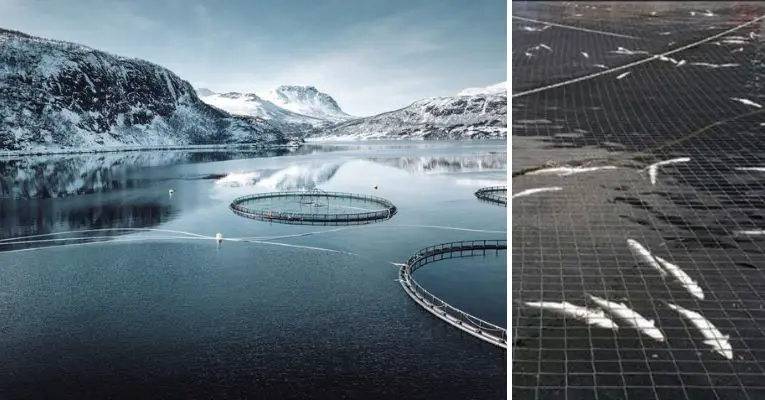Animals
Sudden Surge of Algae Wipes Out 8 Million Salmon in Norway

A rapid surge of algae has killed an estimated 8 million salmon across northern Norway in the past week, sending authorities scrambling to bring the situation under control, according to the Norwegian Fisheries Directorate.
Since mid-May, over 10,000 tons of salmon have died in Norwegian fish farms in the fjords and counties of Nordland and Troms, representing a huge portion of this year’s expected farmed salmon sales and amounting to financial losses numbering in the tens of millions of dollars.
Aleksander Balteskard, who represents Northern Lights Salmon and Sorrollnesfisk, two private family fishing companies that work together in the region, told The New York Times that “about 80 to 90 percent of the salmon that we had this generation” had been decimated.
The algae, which belongs to the genus Chrysochromulina, is a common enough phytoplankton in Norwegian waters but has recently grown out of control due to the warming climate conditions in Northern Europe and slowed currents, among other factors. Under such conditions, some algae blooms can even be seen from space.
The algae sticks to the gill of farmed fish who then face asphyxiation. Farmed fish are unable to escape these conditions, unlike wild fish, who can swim away from the bloom.
Lars-Johan Naustvoll, a biologist at Norway’s Institute of Marine Research, told The Times:
“The algae comes in contact with the gills—it has a chemical composition that affects the membranes of the cells in the gills and they are effectively destroyed—so the fish actually dies due to lack of oxygen.”
The algae bloom is the second to strike Northern European fish farms in as many months. In April, an algae outbreak in Loch Fyne, Scotland, wiped out thousands of farmed salmon. The amount was marginal, however, compared to this week’s losses in Norway, whose salmon farming industry is much larger than Scotland’s, with exports totaling about 1.3 million metric tons in 2018.
Farmed salmon stocks have faced collapse in recent years with sea lice infestations and disease playing a heavy role in thinning out the populations. Many critics have lambasted the farmed salmon industry for its overuse of chemical medications to fight disease in salmon farms, which then have disastrous implications for the broader marine environment, according to The Independent.
This year’s algae bloom has been far more concentrated and lethal than it was in previous years, with climate change being a potential culprit. However, a similar algae bloom did occur in 1991.
Peter Jones of University College London said:
“The mortalities were mostly in northern Norway, so you’re heading towards the Arctic Circle … and we know that seas are warming particularly rapidly in the Arctic.”
Seafood analyst Paul Aandahl told Reuters:
“It’s too soon to say how big the losses will be for the producers. Preliminary numbers point to 8 million dead fish, corresponding to 40,000 tons of salmon that won’t reach markets.”
Norwegian authorities warned on Thursday that the algae bloom may not be over, and could potentially spread north.
While people have little recourse about algae blooms, some see this week’s devastation as a warning of the dangers wrought by changing climatic conditions.
Jones remarked:
“The solution is to take it as another warning that climate change has a myriad of impacts.”
Typos, corrections and/or news tips? Email us at Contact@TheMindUnleashed.com
